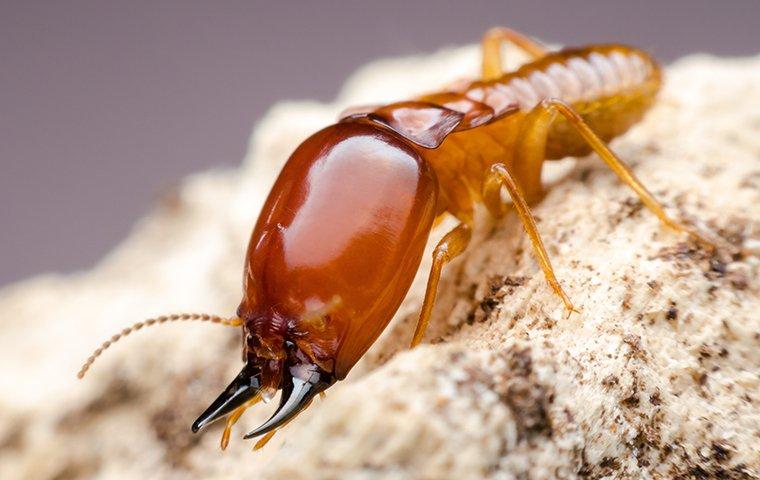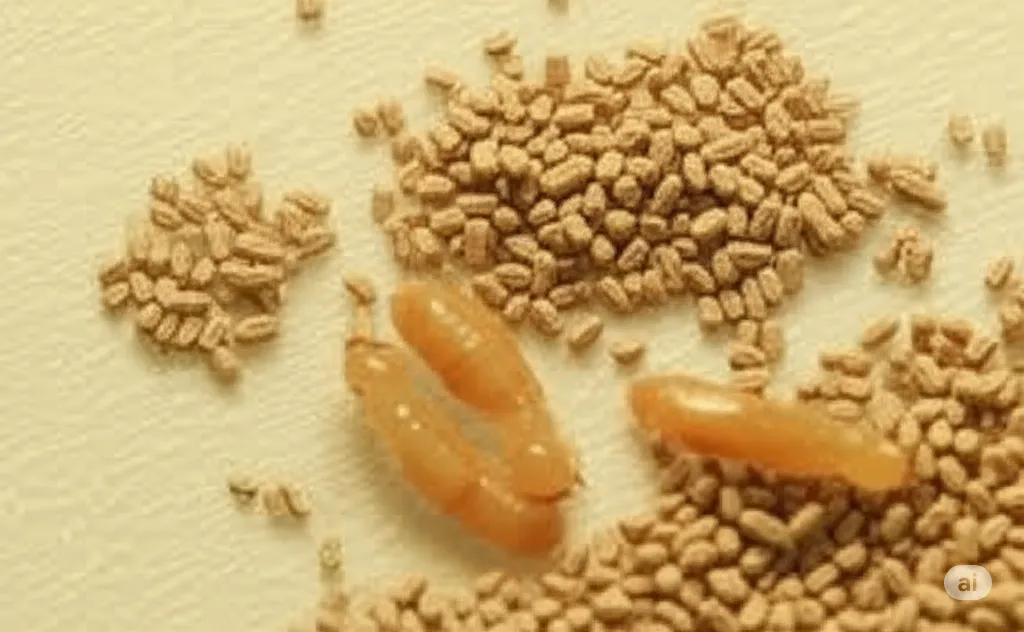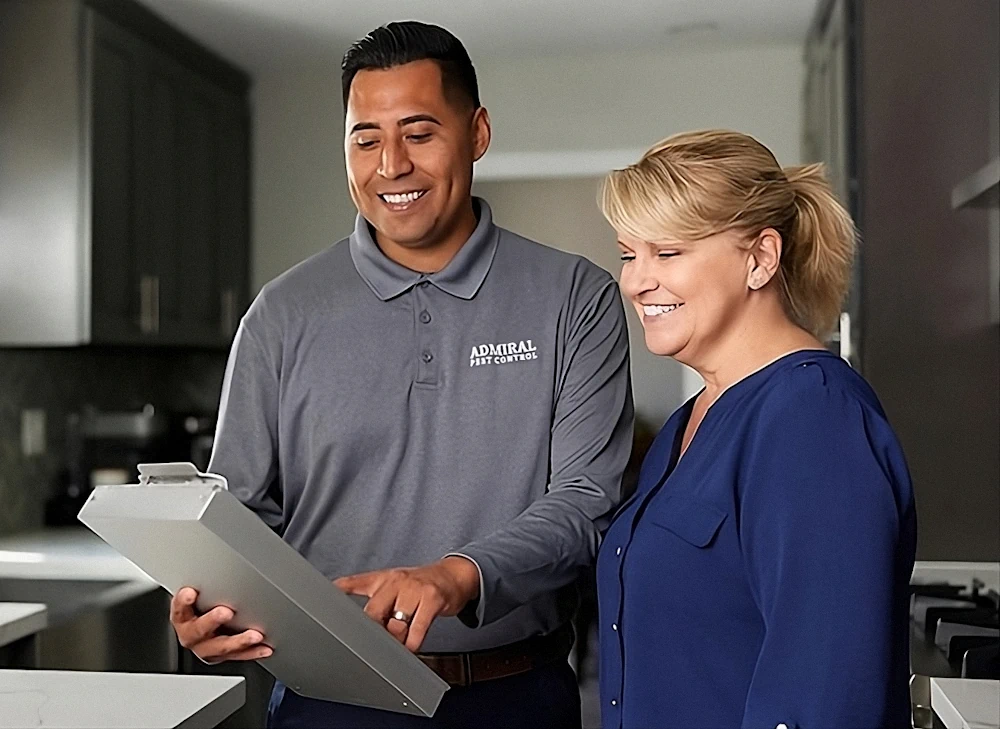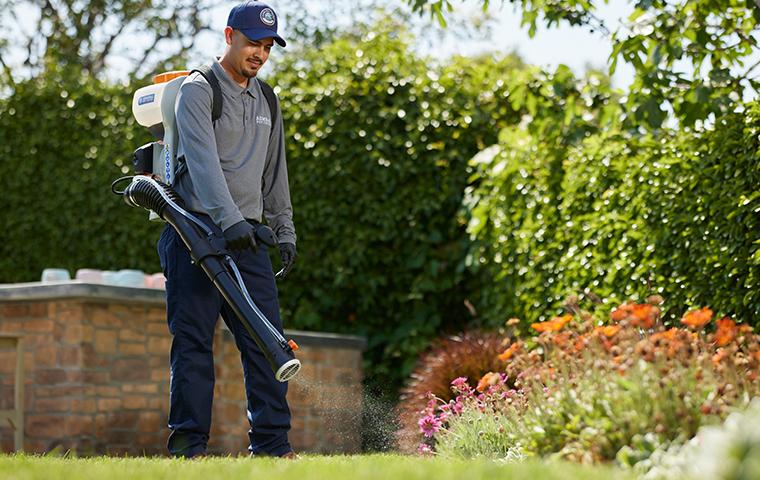Complete Homeowners Guide to Termite Prevention and Control in Orange and Los Angeles Counties
Termites silently destroy Southern California homes, causing over $5 billion in property damage nationwide each year. These destructive pests can hollow out your home’s structural foundation before you even notice their presence, turning your biggest investment into a costly nightmare.
 If you’re a homeowner in Orange or Los Angeles County, you’re living in prime termite territory. The warm, Mediterranean climate creates perfect conditions for multiple termite species to thrive year-round. But here’s the good news: with the right knowledge and professional partnership, you can protect your home from these silent destroyers.
If you’re a homeowner in Orange or Los Angeles County, you’re living in prime termite territory. The warm, Mediterranean climate creates perfect conditions for multiple termite species to thrive year-round. But here’s the good news: with the right knowledge and professional partnership, you can protect your home from these silent destroyers.
We are AdmiralPest.com, your trusted leaders in pest control services across LA and Orange Counties. With years of experience, we specialize in providing top-quality Residential Termite Extermination and Commercial Termite Extermination services. Our dedicated team uses advanced methods and eco-friendly solutions to ensure your home or business is protected from termite damage. Let us help you create a pest-free environment you can rely on.
This comprehensive guide reveals everything you need to know about termite prevention and control in Southern California. You’ll discover how to identify the three main termite species threatening your property, recognize early warning signs before major damage occurs, and implement proven prevention strategies that actually work. Most importantly, you’ll learn why Admiral Pest Control’s 75+ years of local expertise makes them your best defense against termite invasion.
The Three Termite Species Threatening Your Southern California Home

Understanding your enemy is the first step in winning the battle against termites. Orange and Los Angeles counties host three distinct termite species, each with unique behaviors and damage patterns that require specific control approaches.
Subterranean Termites: The Underground Invaders
Subterranean termites pose the greatest threat to Southern California homes. These soil-dwelling insects build protective mud tubes that connect their underground colonies to your home’s wooden structures. They can tunnel up to 100 feet from their nest to reach food sources, making detection particularly challenging.
These termites create pencil-thick earthen tunnels along foundation walls, concrete slabs, and support piers. Inside these tubes, thousands of worker termites travel back and forth, systematically consuming your home’s structural wood from the inside out. By the time you notice sagging floors or hollow-sounding beams, significant damage has already occurred.
The warm Southern California soil provides year-round activity for subterranean colonies, unlike colder climates where winter freezes provide temporary relief. This means your home faces constant termite pressure without seasonal breaks.
Drywood Termites: The Aerial Attackers
Drywood termites take a different approach, establishing colonies directly within dry wood structures above ground. They don’t need soil contact, making them particularly problematic for homes with wooden siding, window frames, and attic components.
These termites create extensive gallery systems within wooden beams and boards, often remaining undetected for years. They expel distinctive wood-colored pellets called frass through small exit holes, creating telltale piles that alert observant homeowners to their presence.
Drywood termite damage typically appears in attics, wooden decks, and structural framing where moisture levels remain relatively low. Their ability to survive in dry conditions makes them especially adapted to Southern California’s climate.
Dampwood Termites: The Moisture Seekers
Dampwood termites target wood with elevated moisture content, typically from plumbing leaks, roof damage, or poor ventilation. While less common than subterranean and drywood species, they can cause significant damage to moisture-compromised structural elements.
These larger termites create irregular galleries with darkened, water-stained wood surfaces. They’re often found in crawl spaces, basements, and areas where wood contacts damp soil or experiences persistent moisture exposure.

Recognizing Early Warning Signs Before Major Damage Occurs
Early detection can save you thousands in repair costs and preserve your home’s structural integrity. Learn to spot these critical warning signs during your regular home maintenance inspections.
Mud Tubes: Highways of Destruction
Subterranean termite mud tubes appear as pencil-thick, earthen tunnels bridging soil to wood surfaces. These protective highways allow termites to travel while maintaining the moisture and darkness they require for survival.
Check foundation walls, basement areas, crawl spaces, and anywhere wood contacts concrete or soil. Fresh mud tubes feel moist and crumble easily when broken, while abandoned tubes become hard and brittle. Active tubes will be rebuilt within days of removal, confirming ongoing termite activity.
Termite Frass: Drywood Evidence
Drywood termites push tiny, hexagonal pellets through small exit holes in infested wood. These uniform, sawdust-like droppings accumulate beneath infested areas, often in inconspicuous locations like wall voids or attic corners.
Fresh frass appears light-colored and uniform in size, distinguishing it from sawdust or other wood debris. Finding frass piles indicates active drywood colonies within nearby wooden structures and warrants immediate professional inspection.
Discarded Wings: Swarm Aftermath
Termite swarmers shed their wings after mating flights, leaving distinctive piles of translucent, paired wings near windows, doors, and light sources. These discarded wings signal that reproductive termites have recently established new colonies in or around your property.
Termite wings appear uniform in size with a distinctive vein pattern, unlike flying ant wings which vary in size and have different vein structures. Document wing discoveries with photos and locations to help professionals assess infestation scope.
Hollow Wood and Structural Changes
Advanced termite damage creates hollow-sounding wood when tapped with a screwdriver handle or similar tool. Sagging floors, tight-fitting doors, and buckling wood surfaces may indicate structural compromise from extensive termite feeding.
These visible signs represent significant damage requiring immediate professional assessment and potentially costly repairs. Regular tapping of exposed wooden beams and floor joists helps identify problems before they reach this advanced stage.

Seasonal Termite Activity in Southern California
Understanding local termite behavior patterns helps time your prevention efforts and inspection schedules for maximum effectiveness.
Prime Swarming Season
Southern California’s termite swarming season typically peaks from late winter through early spring, coinciding with warm, humid conditions following winter rains. Swarm flights usually occur on calm evenings when temperature and humidity conditions favor reproductive success.
During swarming season, mature colonies release thousands of winged reproductive termites seeking new nesting sites. These events often trigger homeowner awareness of existing termite problems and indicate high termite pressure in the neighborhood.
Monitor weather conditions during peak swarming months and inspect your property immediately after suspected swarm events. Document any wing accumulations and schedule professional inspections before new colonies become established.
Proven Moisture Management Strategies
Effective moisture control disrupts termite survival requirements and creates an inhospitable environment for colony establishment. These practical strategies form the foundation of comprehensive termite prevention.
Eliminate Water Sources and Improve Drainage
Fix leaking faucets, pipes, and irrigation systems that create consistent moisture sources attracting dampwood and subterranean termites. Even minor drips can create localized humidity conditions supporting termite activity.
Regrade soil around your foundation to slope away from exterior walls, preventing rainwater accumulation at vulnerable entry points. Proper grading directs water at least five feet away from structural elements, reducing soil moisture near your home’s foundation.
Install and maintain gutters and downspouts to channel roof runoff away from your property. Clogged gutters create overflow conditions that saturate foundation areas and wooden structural elements, creating perfect termite habitat.
Enhance Ventilation Throughout Your Home
Adequate air circulation in basements, crawl spaces, and attics reduces humidity levels that support termite colonies. Install foundation vents, exhaust fans, and vented soffits to promote continuous airflow through enclosed spaces.
Maintain relative humidity below 50 percent in enclosed areas using dehumidifiers when necessary. High humidity creates condensation on wooden surfaces, providing the moisture termites need for survival and reproduction.
Control Crawl Space and Attic Moisture
Seal plumbing connections and HVAC penetrations to prevent water intrusion into structural cavities. Install vapor barriers in crawl spaces to prevent ground moisture from reaching wooden elements.
Regular inspection of these concealed areas allows early detection of moisture problems and termite activity before damage becomes extensive. Address any signs of water intrusion immediately to prevent termite attraction.

Strategic Landscaping for Termite Prevention
Your yard management practices directly impact termite pressure around your home. These landscaping strategies interrupt termite foraging patterns and reduce attraction factors.
Remove Wood Debris and Storage
Clear fallen branches, tree stumps, and construction debris from your property to eliminate termite feeding sites near your home. Store firewood at least 20 feet away from structures and elevate it on metal racks to prevent soil contact.
Wood piles, lumber storage, and organic debris create termite colonies that can eventually spread to your home’s structural elements. Regular yard cleanup removes these attraction factors and reduces overall termite pressure.
Maintain Strategic Plant Distance
Keep mulch, soil amendments, and vegetation at least six inches away from your foundation to prevent moisture retention against exterior walls. Dense plantings against structures create humid microclimates supporting termite activity.
Trim shrubs and vines to maintain a one-foot gap between foliage and your home’s exterior surfaces. This spacing improves airflow, allows walls to dry quickly after rain, and enhances visibility during routine inspections.

Structural Barriers and Home Maintenance
Physical barriers and regular maintenance create multiple defense lines against termite penetration. These proactive measures complement moisture control and professional treatments.
Seal Entry Points and Foundation Gaps
Apply polyurethane caulk and metal mesh barriers to gaps around plumbing penetrations, electrical conduits, and foundation joints. These small openings provide subterranean termites direct access to structural wood without detection.
Conduct semi-annual foundation surveys to identify new cracks, settling gaps, or damage that creates termite entry opportunities. Prompt sealing prevents colony establishment and maintains barrier integrity.
Use Termite-Resistant Building Materials
Specify pressure-treated lumber for new construction, repairs, and replacement projects. Modern termiticides integrated into treated wood provide long-lasting protection against termite attack while maintaining structural performance.
Consider naturally resistant wood species like redwood or cedar for exposed applications, though these materials cost more than conventional lumber. Metal and composite materials eliminate wood entirely in vulnerable applications.
Schedule Professional Inspections
Annual professional inspections provide expert assessment beyond typical homeowner capabilities. Trained technicians use moisture meters, infrared imaging, and specialized probing tools to detect hidden termite activity before visible damage appears.
Professional inspections typically occur during late winter before swarming season begins. This timing allows treatment of existing colonies before reproductive flights establish new infestations around your property.
Advanced Professional Treatment Options
Professional termite control integrates multiple treatment methods tailored to specific species and infestation scenarios. Understanding these options helps you make informed decisions about protecting your investment.
Liquid Termiticide Barriers
Liquid soil treatments create continuous chemical barriers around your home’s foundation that termites cannot detect or avoid. Modern non-repellent termiticides allow foraging termites to contact treated soil and carry active ingredients back to their colonies.
This transfer effect eliminates entire colonies through social interaction, providing comprehensive control beyond the immediate treatment zone. Properly applied liquid barriers provide protection for 5-10 years depending on soil conditions and termiticide selection.
Termite Baiting Systems
Strategic bait station placement around your property intercepts foraging termites, allowing them to feed on slow-acting insect growth regulators. As they return to the colony and pass the active ingredients through social interaction, termite populations are gradually reduced until complete elimination is achieved.







